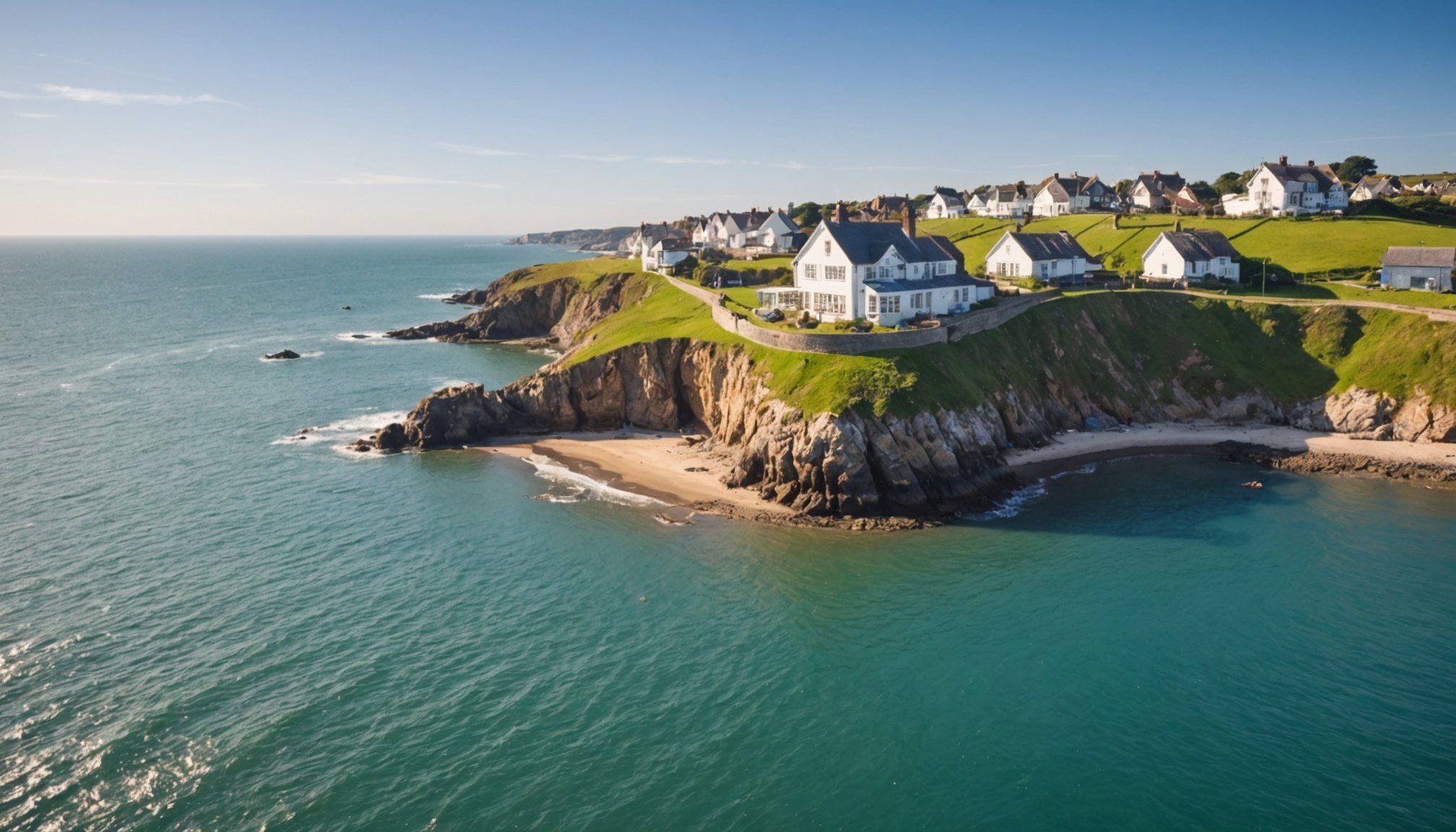Overview of Climate Change and Coastal Properties
Understanding the relationship between climate change and coastal properties is crucial in the current real estate landscape. Changes in the environment, especially in coastal areas, have profound implications for property investments. Coastal regions in the UK have historically attracted investments due to their picturesque locations and economic opportunities.
However, the ongoing rising sea levels raise significant concerns for the future of UK real estate in these areas. Predictions based on scientific models suggest that many low-lying areas are at risk due to melting polar ice and thermal expansion. This rise in sea level not only threatens the physical integrity of properties but also impacts market segmentation by potentially lowering demand in vulnerable areas.
In parallel : Top Strategies for Cutting Property Management Costs in the UK: Achieve Greater Efficiency and Savings
In this context, coastal properties face a unique set of challenges and opportunities. While they provide attractive investment opportunities, the associated risks require careful consideration and strategic planning. Adopting sustainable practices and investing in flood defenses are some steps investors can take to mitigate risks. Understanding these factors is vital in ensuring profitable and resilient real estate investments amidst climate-related challenges.
Economic Impacts of Climate Change on Coastal Property Investments
Understanding the economic impacts of climate change is crucial for investors focusing on coastal investments. These impacts are primarily observed in the form of fluctuating property valuation due to environmental changes. Properties at higher risk of flooding or erosion may see declines in market value, deterring potential buyers and affecting financial stability.
Additional reading : Mastering Rental Property Management: Top Strategies for Success in the UK”s Student Housing Market
Long-term economic forecasts suggest continued vulnerability as climate change exacerbates. Coastal areas are expected to experience increased severity of environmental conditions, which potentially influences the UK real estate market adversely. Investors must exercise caution and factor in these forecasts when making decisions about coastal property investments.
Insurance and financing play significant roles in determining investment viability. Insurers could increase premiums for high-risk properties or withdraw coverage altogether, leading to financial exposure. Difficulties in obtaining affordable insurance may further depress property valuations. Simultaneously, access to financing might become restricted as lenders adjust their criteria based on perceived risks.
To mitigate financial impacts, investors might explore diversified portfolios and invest in technology or infrastructure that enhances property resilience. Sustainable practices and strategic adaptation are key to navigating the challenges posed by climate change on coastal property investments.
Risk Assessment for Coastal Properties
Understanding risk assessment is paramount for evaluating coastal property investments. Given the impact of climate change and the unique coastal risks involved, investors need thorough evaluations.
Identifying Vulnerable Areas
First, identifying vulnerable areas is crucial. Investors can leverage tools like satellite imaging and geographic information systems to assess risks related to rising sea levels. Regions such as the Somerset Levels and Norfolk coastlines have already reported significant climate-related challenges. These resources enable investors to gauge vulnerability accurately, minimizing unforeseen risks.
Legal and Regulatory Considerations
Investments in coastal properties also demand adherence to extensive legal and regulatory considerations. UK planning permissions often incorporate climate risk assessments, requiring investors to align with environmental policies. These include assessments of flood risks and sustainable development practices, ensuring that properties withstand evolving climate change impacts.
Financial Risks
Investors face considerable financial risks in high-risk coastal areas. Depreciating property values and potential insurance coverage challenges necessitate strategic responses. Mitigation strategies might include infrastructure development and investment in flood defenses, enhancing the property’s resilience. Calculating the return on investment meticulously, with climate impacts in mind, can guide financially sustainable decisions.
Strategies for Investment in Coastal Properties
Navigating the realm of coastal real estate requires a blend of insight and adaptability. Especially amidst climate uncertainties, investors need robust investment strategies.
Best Practices for Investing
Successful investors emphasize thorough risk assessments. They prioritize properties with sustainable infrastructure to combat rising sea levels. By conducting meticulous due diligence, potential pitfalls related to coastal properties can be minimized.
Innovative Mitigation Strategies
Investors are increasingly turning to climate-resilient designs. These involve elevating structures and using materials resistant to harsh weather conditions. Another innovative approach includes restoring natural barriers like mangroves and dunes, which serve as buffers against sea-level rise.
Significance of Sustainability
Sustainability is at the forefront of promising investment strategies. Implementing renewable energy solutions and water conservation measures can enhance property value. Additionally, aligning investments with environmentally friendly practices attracts eco-conscious buyers, driving demand and increasing market appeal.
Ultimately, the combination of proactive planning, innovative techniques, and a commitment to sustainability offers a blueprint for successful investment in coastal real estate. By integrating these strategies, investors can navigate the challenges presented by climate change while seizing opportunities for mitigation efforts.
Case Studies and Expert Opinions
In the realm of coastal property investments, exploring case studies and consulting expert insights is invaluable. These elements provide a clear picture of the intricacies involved in navigating the challenges posed by climate change, offering practical solutions and valuable lessons.
Successful Investment Examples
Examining successful case studies reveals strategies that investors have employed. In regions like Sussex, developers incorporated flood defenses and landscape adjustments, significantly boosting property resilience and value. These adaptations have led to more lucrative outcomes despite climate vulnerabilities.
Expert Perspectives
Experts like Professor Rhian Whitson from the University of East Anglia emphasize the importance of sustainable development. They advocate for integrating advanced technology and infrastructure for resilient investments. Her insights suggest that proactive measures are crucial for long-term viability.
Lessons Learned
Key lessons from these case studies highlight the necessity of adaptable, long-term planning. Prioritizing mitigation efforts, such as enhancing natural buffers and implementing green architecture, has proven effective. Consequently, recognising potential risks and acting decisively secures favourable investment outcomes in climate-impacted areas.
Conclusion and Future Outlook
The future outlook for coastal property trends is shaped by evolving climate impacts and changing investment dynamics. In the next decade, the landscape of climate change will continue to impact the UK real estate market, presenting new challenges and opportunities for investors. Rising sea levels are expected to escalate, necessitating robust adaptation and planning measures to maintain property valuations in coastal regions.
Predictions for the coming years include a potential shift in market preferences, favouring properties with demonstrated resilience to climate effects. Ongoing research is vital to understanding these changing conditions, enabling investors to make informed decisions. Additionally, innovative adaptive strategies help mitigate risks and maintain investment viability.
Investors must remain vigilant, continually assessing climate risks and updating their investment approaches. As awareness of environmental sustainability grows, investing in eco-friendly and resilient infrastructure becomes increasingly key. Coastal properties that integrate green technologies are likely to attract both investors and residents, reflecting a trend towards sustainable development.
Ongoing research and adaptive strategies are imperative for navigating the shifting paradigms driven by climate change, ensuring a favourable outlook for coastal property investments.











